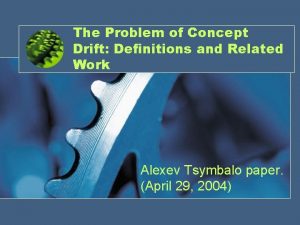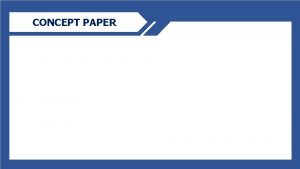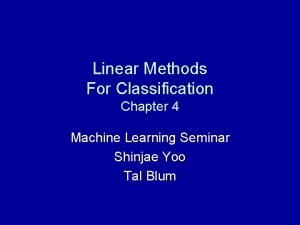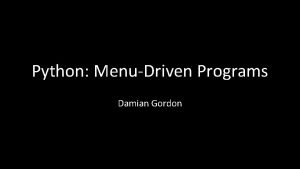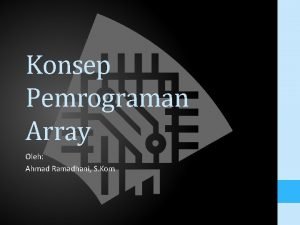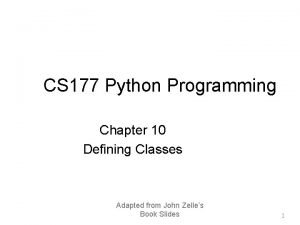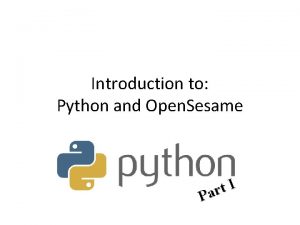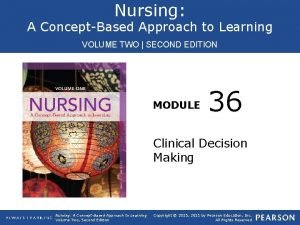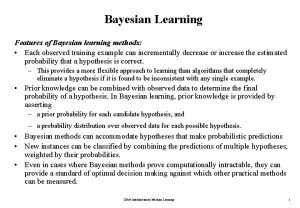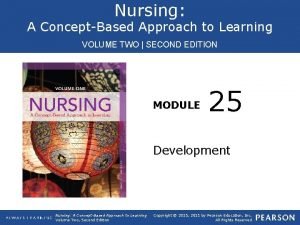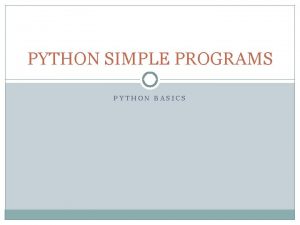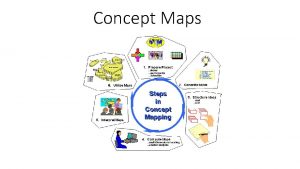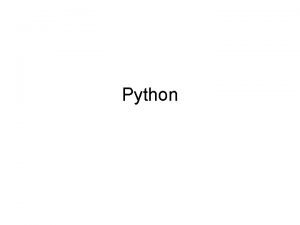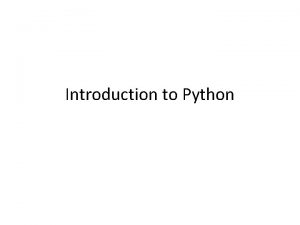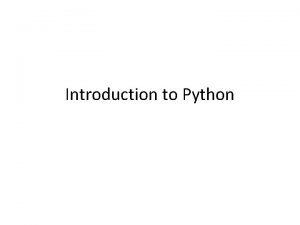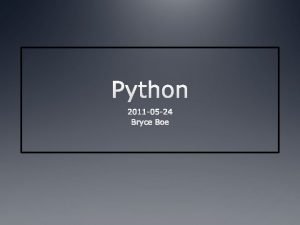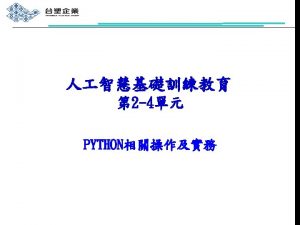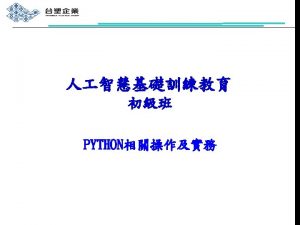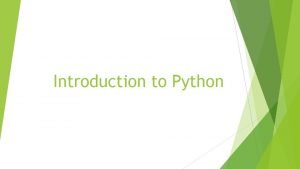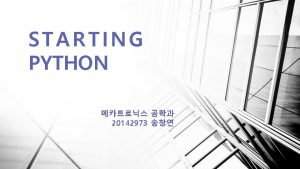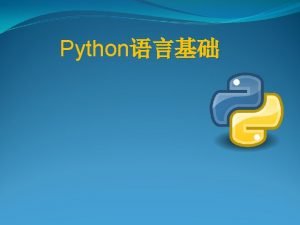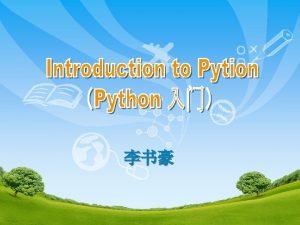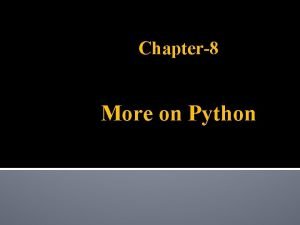Learning to Program in Python Concept 7 DEFINITIONS


















- Slides: 18

Learning to Program in Python Concept 7 DEFINITIONS (Recursive)

Learning Intentions From this lesson the students will be able to: 1. Write a program that calls itself. A recursive function. 2. Define when a recursive function should be used. 3. Use a recursive function to find the factorial of any integer. LO 2. 9 students should be able to assemble existing algorithms or create new ones that use functions (including recursive), procedures, and modules

recall from FUNCTIONS • We can pass in as many parameters to a function as we like: – def fancy. Number. Of. Inputs(a, b, c, x, y, z) • BUT we can only ever have one (if any) return from a function.

Recall this definition The command return sends back the variable to wherever the function was called. (usually in the main program)

halve. ME in a LOOP Beginning with 1024, predict the output of this program as it goes through each iteration of the loop. LO 1. 6 students should be able to explain the operation of a variety of algorithms

halve. ME in a LOOP But what if the definition halve. ME called itself? So instead of returning half. My. Number we wrote : halve. ME(half. My. Number) ?

Call Myself Using pen and paper, predict the output. Write the code and Let the output run. You will (eventually) get an error telling you there are too many recursions. How would you stop the program going below a value of 1?

CALL and STOP Myself A recursive definition calls itself. A terminating condition makes it stop calling itself at some point.

A Basic Recursive Function A recursive function can often be used when: 1. A problem can be broken down into an identical, just smaller, problem. (A subproblem) 2. There is a definite terminating condition. In other words as the sub-problems get smaller, there is eventually a definite answer. The subproblem cannot be broken down any further. Also called a Base Case. LO 2. 9 students should be able to assemble existing algorithms or create new ones that use functions (including recursive), procedures, and modules

A Basic Recursive Function Investigate the program on the next slide. Can you see the 2 characteristics of a problem solved using recursion? LO 1. 3 students should be able to solve problems by deconstructing them into smaller units using a systematic approach in an iterative fashion

Sample Code ? m le b ro on ? P b diti u S -> Con m ing e l b at o r P rmin. 1 Te 2.

The FACTORIAL of an integer! The factorial of 3 is 3 x 2 x 1. The factorial of 6 is 6 x 5 x 4 x 3 x 2 x 1. The symbol for factorial n is n! 3! = 6. 6! = 720. n! = nx(n-1)x(n-2)…. 3 x 2 x 1 LO 2. 5 students should be able to use pseudo code to outline the functionality of an algorithm

CHALLENGE • Write a program that – Calculates the factorial of a number without using a recursive definition. – Then write a program using a recursive definition. LO 2. 5 students should be able to use pseudo code to outline the functionality of an algorithm

Sample Factorial Program non-recursive LO 1. 2 students should be able to explain how the power of computing enables different solutions to difficult problems

Sample Factorial Program recursive LO 1. 2 students should be able to explain how the power of computing enables different solutions to difficult problems

CHALLENGE • Write a function that – Takes a word (string) from the user. – Checks if the word is a Palindrome, non-recursively – Does this recursively! RACECAR goes forwards and backwards LO 2. 20 students should be able to identify and fix/debug warnings and errors in computer code and modify as required

CT Challenge… Paths and Nodes Your task is to use a recursive function to figure out how to cross the graph, from node 1 (N 1) to node 6 (N 6). As the Turtles follow the nodes on the graph, the challenge is to find paths that can be walked without repeating any nodes.

Lesson Review As a result of this lesson: 1. I can write a program that calls itself. A recursive function. 2. I can define when a recursive function should be used. 3. I have written recursive definitions for a variety of different problems and contexts. LO 1. 5 students should be able to evaluate alternative solutions to computational problems
 The problem of concept drift: definitions and related work
The problem of concept drift: definitions and related work Definition
Definition Concept learning task in machine learning
Concept learning task in machine learning Cuadro comparativo e-learning b-learning m-learning
Cuadro comparativo e-learning b-learning m-learning Tarkustech
Tarkustech Lda machine learning python
Lda machine learning python Contoh kasus stack
Contoh kasus stack Array 2 dimension
Array 2 dimension Python menu driven program
Python menu driven program Program gerobak fried chicken python
Program gerobak fried chicken python Python program
Python program Create python program
Create python program Ideal self example
Ideal self example Perbedaan selling concept dan marketing concept
Perbedaan selling concept dan marketing concept General to specific ordering of hypothesis
General to specific ordering of hypothesis Nursing a concept based approach to learning volume 2
Nursing a concept based approach to learning volume 2 Features of bayesian learning methods
Features of bayesian learning methods Nursing a concept based approach to learning
Nursing a concept based approach to learning Nursing a concept based approach to learning
Nursing a concept based approach to learning
